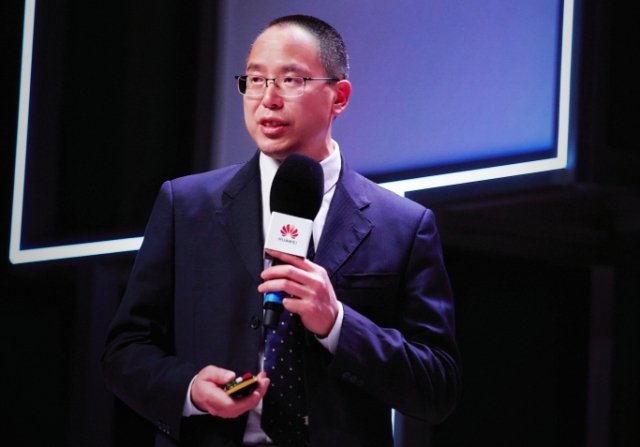Huawei has unveiled its latest One 5G solutions, capable of driving all bands to 5G — at the Mobile World Congress (MWC) Barcelona 2023.
 Huawei is the #1 telecom equipment maker in the world.
Huawei is the #1 telecom equipment maker in the world.
GSMA Intelligence says 5G connections are expected to double over the next two years. Operators in 30 countries will be spending on 5G network deployments in 2023. Mobile operators in 15 countries will be spending on 5G Standalone networks. There were 229 commercial 5G networks globally as of January 2023 and over 700 5G smartphone models available to users.
Cao Ming, President of Huawei Wireless Product Line, said: “The rapid development of 5G will stimulate the evolution of all bands to 5G. Huawei’s One 5G solutions deliver industry-leading performance, and feature simplified O&M and deployment, as well as unrivaled energy efficiency and evolution ability.”
One 5G solutions can unleash the full power of all bands at a single site based on TDD, FDD, and indoor digitalization. IntelligentRAN enables in-depth, network-wide collaboration across all scenarios, helping operators build the most cost-effective 5G networks.
Combinations of advanced software and hardware, such as extremely large antenna array (ELAA) and the AHR algorithm, can result in optimal TDD coverage and the ultimate experience. New “0 bit, 0 watt” MetaAAU offers excellent coverage, while maintaining optimal energy efficiency, in all scenarios, as well as ensuring ultra-low power consumption when under a light load.
The 800 MHz MetaAAU, featuring the industry’s largest bandwidth, can cover full C-band. This facilitates the simplified deployment of 3400 MHz to 3800 MHz, and will also cover 3800 MHz to 4200 MHz in the future.
Huawei will launch Meta BladeAAU, which integrates Meta and Blade technologies for scenarios with limited antenna installation space. The Meta BladeAAU allows all sub-6 GHz bands to be deployed on a single pole.
Huawei’s new 32T32R M-MIMO module for macro base stations weighs 12 kg assisting in operators’ network construction efficiency.
Ultra-wideband 4T4R RRU simplifies the deployment of all FDD bands and RATs while slashing energy consumption by 20 percent. The built-in PIM cancellation technology eliminates interference, and SingleCell improves user-perceived rate at the cell edge by 20 percent.
Ultra-wideband 8T8R RRU can improve network capacity and coverage, increasing user experience by 40 percent. The Power-Boosting technology enables 100 percent dynamic power sharing between carriers and between RATs, allowing the same performance at 30 percent lower power consumption. Power-Adapting supports on-demand power scheduling to achieve equivalent basic power consumption between 8T8R and 4T4R RRUs.
Huawei’s FDD M-MIMO is able to increase capacity by five times. The FDD BladeAAU is a combination of FDD M-MIMO and advanced transparent antenna technology. It achieves optimal sub-3 GHz coverage and ultimate capacity while supporting single-pole deployment.
The Huawei LampSite 5.0 solution integrates 3G, 4G, and 5G, and this design reduces its weight and volume by 25 percent, and site power consumption by 40 percent. Supported by distributed M-MIMO, it is also able to translate interference into gains and bring a 4-fold increase to network capacity, achieving ubiquitous gigabit experience.
Huawei’s RuralLink solution provides three-sector coverage with just a single RRU and one antenna. It uses microwave fronthaul to simplify deployment, eliminating the need for BBUs and extending the coverage range of remote sites to 20 km. RuralLink supports remote O&M and requires just six solar panels to power a single site.
Signal direct injection feeding (SDIF) is Huawei’s advanced antenna technology. It saves a large number of feeders and cables, and improves amplitude and phase precision while significantly reducing impedance loss, boosting overall antenna RF efficiency.
Huawei’s SDIF technology is designed for all antenna scenarios and series to meet band- and region-specific configuration requirements, bringing about a 20 percent increase in the energy efficiency of all bands.
The new 2T products that support conventional bands (with 800 MHz bandwidth) allow more carriers to be aggregated. The 2T products supporting E-band provide 25 Gbps capacity. Their transmission distance is 50 percent longer thanks to higher transmission power and intelligent beam tracking antennas.
Huawei IntelligentRAN brings intelligence to the RAN and provides three major functions: iPowerstar, iHashband, and iFaultcare. The live network test results show that the iPowerstar doubles the energy saving effect compared with conventional solutions, while the iHashband improves user experience by 30 percent, and the iFaultcare improves troubleshooting efficiency by 40 percent.
